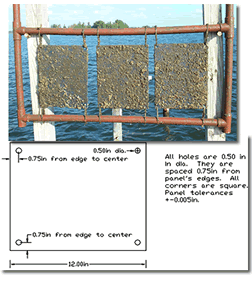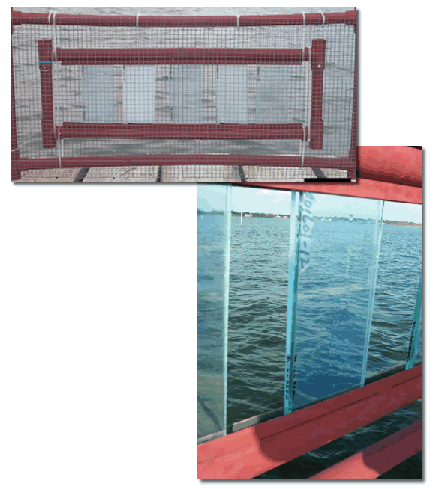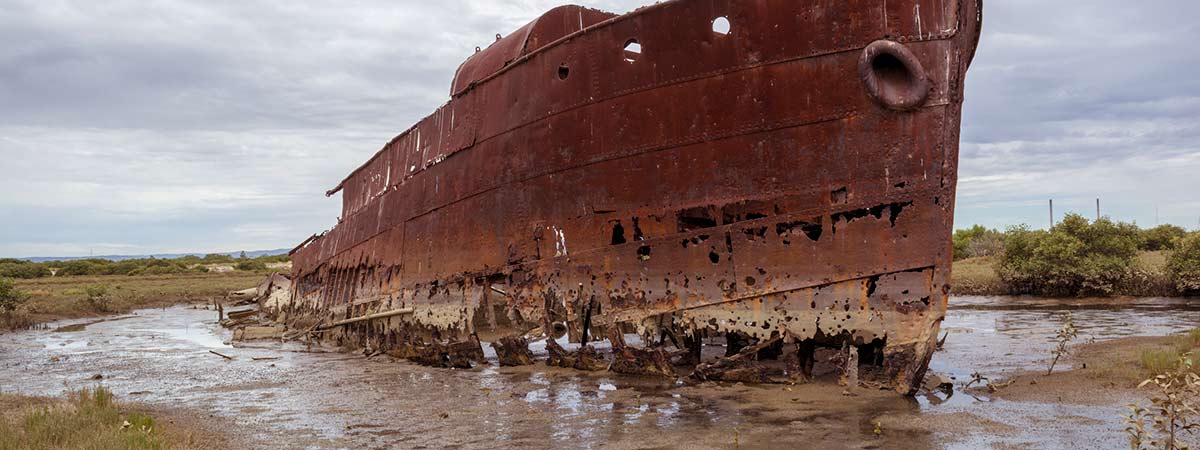Static immersion testing exposes materials and test coatings to biofouling in a seawater environment. These tests maybe used to ascertain the relative antifouling performance of a surface or they maybe designed to investigate specific aspects of the technology. When designing static immersion tests both seasonal and spatial variations in the type and quantity of fouling at the test site must be taken into consideration.
Test Panels
Test surfaces may be of any shape or size, however, there are two standard sizes that are used at the FIT test site. These are 10" x 12" and 4" x 8" flat panels. The test surfaces are mounted to PVC frames and immersed in seawater. The panels maybe enclosed in fish exclusion cages to accelerate the intensity of fouling.
10" x 12" Static Immersion Panels

The 10" x 12" Panels are used for long term and hydrodynamic tests. They are usually made from 1/8" thick marine grade aluminum or fiber reinforced plastic. 1/2 inch diameter holes are drilled 3/4" from the sides of each corner to facilitate attachment to a PVC frame.
Panels should be coated on both sides with corner holes pre-drilled. Replication depends greatly on experimental design, but a minimum of two replicates is suggested.
The panels are attached to PVC frames using nylon tie wraps. Three 10" x 12" panels can be fastened within a single test frame. Frames are enclosed within cages to exclude predation and to accelerate data collection.
4" x 8" Static Immersion Panels

The 4" x 8" Panels are used for short term and settlement studies. They are usually made from 3/16" thick glass, marine grade aluminum or fiber reinforced plastic. These panels are only coated on one side and they are placed back to back in frames that are designed to hold them in place. In this configuration only the test surface is exposed to fouling and the backside remains clean. The use of glass panels, in conjunction with clear coatings, enables detailed settlement and growth studies to be performed.

